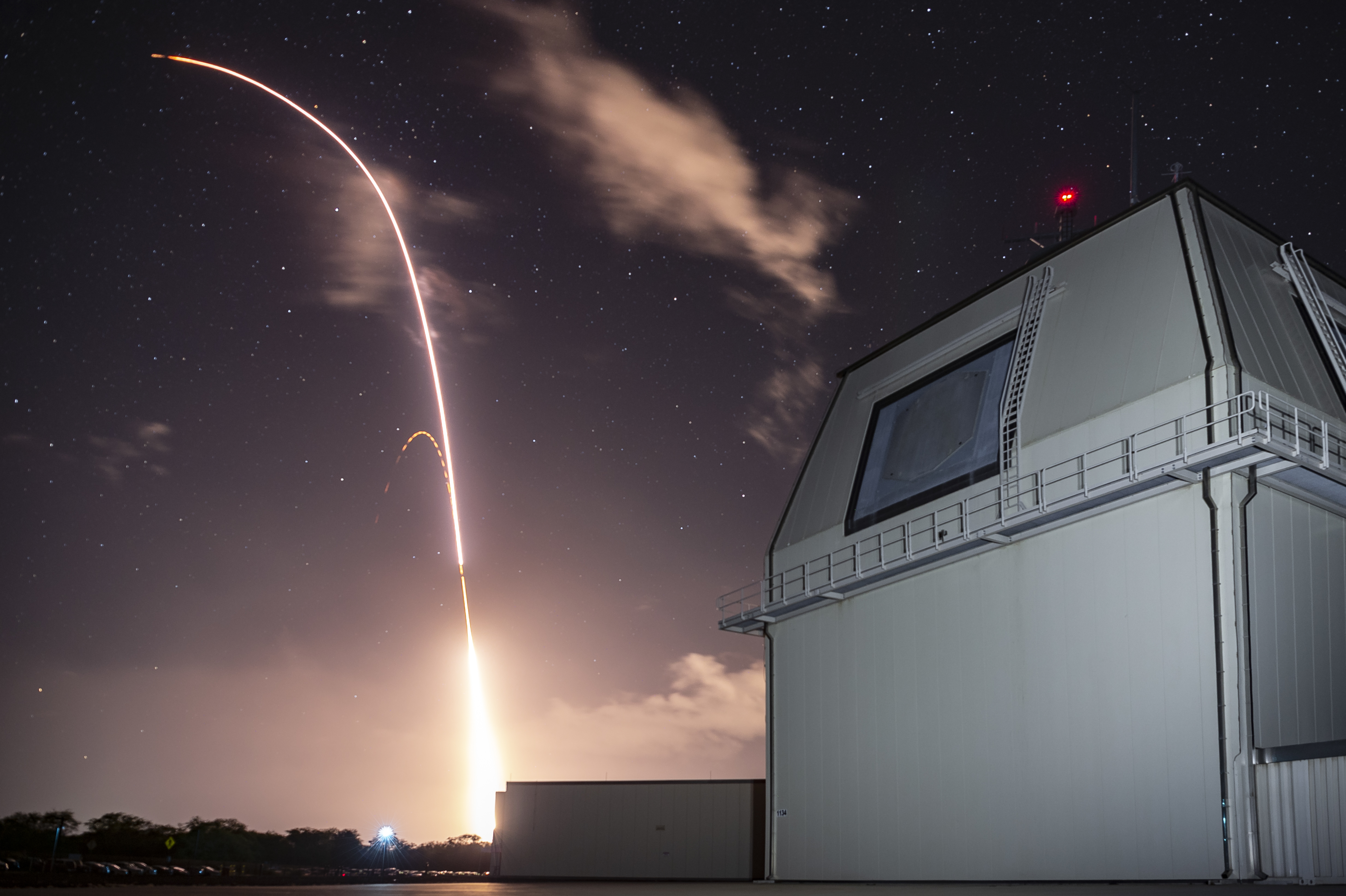
The head of U.S. Indo-Pacific Command told reporters today he wants the Aegis Ashore ballistic missile defense system to bolster the defense of Guam from Chinese missiles.
The Aegis Ashore Baseline 10 system should be “the backbone of [a] homeland defense system” for Guam, Adm. Phil Davidson said during a Defense Writers Group virtual roundtable.
“The reason I’m a key advocate for that is first: it is technology that is available to us now and could be delivered by 2026, when I believe the threat will require us to have a much more robust capability than the combination of [Terminal High Altitude Area Defense], which is deployed there now, and an Aegis ship in response can provide,” Davidson said.
Davidson said the current defense system for Guam is not adequate to thwart potential Chinese missiles.
“When you look at the way the threat capability, threat capacity, is manifesting from China in the future – whether it’s ballistic missiles from the land or whether it’s ballistic or cruise missiles from air and maritime platforms – you are going to need a complete clock, a 360-degree coverage in order to help defend Guam,” the admiral said.
Aegis Ashore is based on the same air search radars and vertical launch systems found aboard the Navy’s guided-missile cruisers and destroyers. The land system was developed as part of the Obama administration’s European ballistic missile defense program. The program paired installations in Romania and Poland with a quartet of forward-deployed guided-missile destroyers to counter a rogue ballistic missile from an aggressor like Iran. Aegis Baseline 10, developed by Lockheed Martin for the ground installations and ships with Aegis, would bring increased capabilities to units with either the existing Lockheed SPY-1D(v) air search radars or the new Raytheon SPY-6 radars being developed for the Flight III Arleigh Burke-class destroyers (DDG-51).
In a report to Congress earlier this year, Davidson detailed what he needs in the Indo-Pacific region to put the Pentagon’s National Defense Strategy into effect and called for about $20 billion within the next six years to achieve the goals in the defense strategy.
On Tuesday, Davidson said the defense system for Guam, which appeared in a summary of his report to lawmakers, is his “number-one priority” as he works to meet the objectives of the defense strategy.
Both House and Senate authorizers included measures focused on the Indo-Pacific region in their Fiscal Year 2021 defense policy bills, but the two chambers took different approaches.
The Senate Armed Services Committee created a “Pacific Deterrence Initiative” in its draft of the policy legislation and authorized $1.4 billion for the effort, which would “increase lethality of the Joint Force” in the region, according to a summary of the panel’s legislation.
Meanwhile, the House Armed Services Committee’s chairman’s mark of the policy bill called for “an Indo-Pacific Reassurance Initiative” and authorizes $3.6 billion for the endeavor. HASC Chairman Rep. Adam Smith (D-Wash.) last month stressed the importance of partnerships with allies and expressed concern over a potential “arms race” strategy in the Indo-Pacific.
“Clearly we’re going to have to see how this moves through Congress,” Davidson said of lawmakers’ efforts.
“But I would say … two of the pillars that I’m trying to build our deterrence strategy on: one is strengthening our allies and partners, I would say as well as enhancing the design and posture – how we’re located in the region, how we operate in the region – is an element of that,” he continued. “That will help create strategic positional advantages in the region because we enjoy a network of allies and partners that frankly China does not.”
The House passed its defense policy bill today, while the Senate is debating amendments to its version of the legislation.
Last month, Japan canceled the installation of two Aegis Ashore BMD batteries over worries the debris from the interceptors could land in civilian areas, though a source told USNI News that any safety issues were due to the specific locations chosen for the Aegis Ashore sites and were not reflective of the Aegis Ashore system itself.





